A beginning primer for a career in civil engineering.
If you are a parent, you know, or will eventually realize, that toys are all-consuming. They take over your home. Your life. Everything. When translated to civil engineering and construction “speak,” they are a critical path to sanity. As such, it becomes crucial to evaluate the value of a proposed toy thoroughly. This is not necessarily the upfront cost, but the value it will bring to your child while factoring in the collateral damage to your mental health (pause here to clean up THAT toy for what seems like the millionth time). The goal, if you wish to proceed with the purchase, is that the toy will keep them blissfully busy—and learning—so you can finish those project calculations you cannot seem to get to and, let’s face it, so that you won’t feel guilty later for the two hours of cartoons they end up watching. With that goal in mind, this article reviews the Civil Engineer Starter Kit by KiwiCo through the eyes and experience of a 14-year-old, 10-year-old, and 8-year-old. Also present during testing were two adult electrical engineers (becomes relevant later), one adult structural engineer, one adult mechanical engineer, and an almost 5-year-old. Disclaimer: Every kid is different, so proceed while keeping your child and situation in mind. And if you don’t have kids, you might learn something too and have fun doing it!
Who Was Into It?
First off, it must be noted that the 14-year-old showed little to zero interest in the kit. The 8-year-old was interested and engaged, although they stated it was “hard” within the first five minutes. The almost five-year-old took a pass to paint instead. But, no harm, no foul! Because the company indicates that the kit is for “plus” 9-year-olds. And the 10-year-old was REALLY into it. So, no false advertising here, folks. Assume greater than or equal to nine and less than fourteen is the target for an engaged user.
What is in The Box?
There are two detailed instruction booklets, one for a bridge and one for a tower and shake table.
The KiwiCo website does an excellent job of illustrating what you get when it comes to the parts to build a bridge, tower, and shake table (dampers included!) and includes a good amount of learning literature. The good news is that the literature emphasizes the design process and interviews a “real” engineer! The bad news is that none of the three test subjects paid much attention to the learning material. Maybe different results would have occurred if these kids were not on summer break and homework-adverse during testing. The literature was graphically pleasing, and it is also neat that the company uses kids to test its products in research and development.
The Bridge
The 8-year-old was immediately drawn to the bridge. Perhaps because these pieces are larger and more solid than the tower’s. The bridge is only held together by gravity and friction and does not require connectors. However, assembly was challenging, and it took two people to accomplish. It was also easily destroyed, leading to much frustration from the 8-year-old. The instruction booklet encourages other ways to “challenge” yourself, such as timed and blind building. None of the kids were interested in doing this, and the bridge was soon abandoned in favor of the tower and shake table.
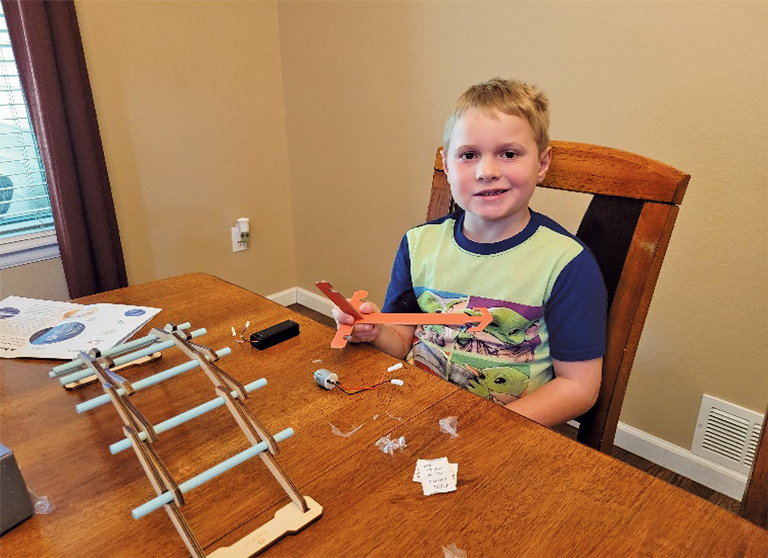
The Tower
The tower is comprised of straw (as in drinking) members and braces, and plastic connectors. Some plumbness (straightness) issues were encountered, and initially, this was frustrating for the 10-year-old, who stated that it “was not perfect” as it was assembled. However, this seemed to be quickly overcome and forgotten as play continued. The connectors are flexible and provide fixed connection points in a radial pattern to allow for the assembly of other shapes, such as spheres. The kit also has a tower base for initial assembly before being transferred to the shake table. The “foundation” consists of velvet twisty ties that could be more robust, in the author’s opinion. Overall, the tower took about 10 minutes to assemble.
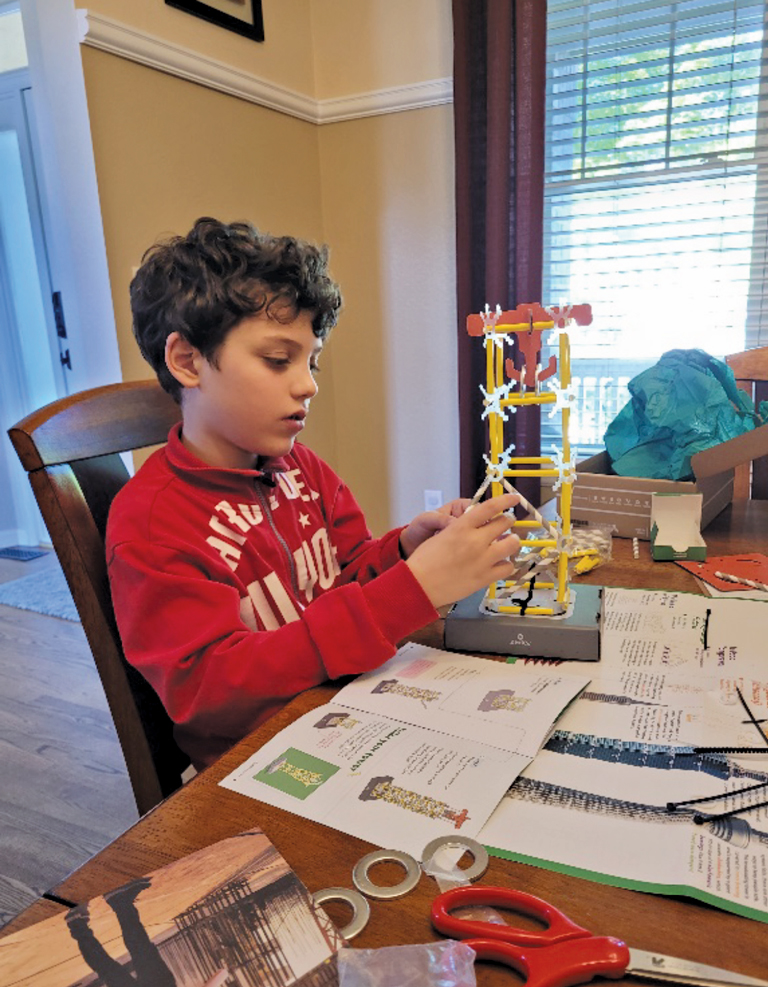
The Shake Table
The shake table was the most challenging to assemble and required intervention from an adult. But overall, it is a clever design. It also includes a motor to enable shaking, complete with an on/off switch. This adds another dimension for kids interested in mechanics and electronics or thinking about creating machines to take over the world. A word of caution is that the kit comes with few, if any, extra parts, meaning that there is not much room for error. The company may intend to simulate a civil engineer’s daily stress about mistakes and material procurement. To that end, the lack of extra parts caused anxiety for the adults who find themselves in those situations regularly, but not for the kids. Accounting for the increased difficulty level, but with fewer parts than the tower, the shake table took about 15 minutes to assemble.
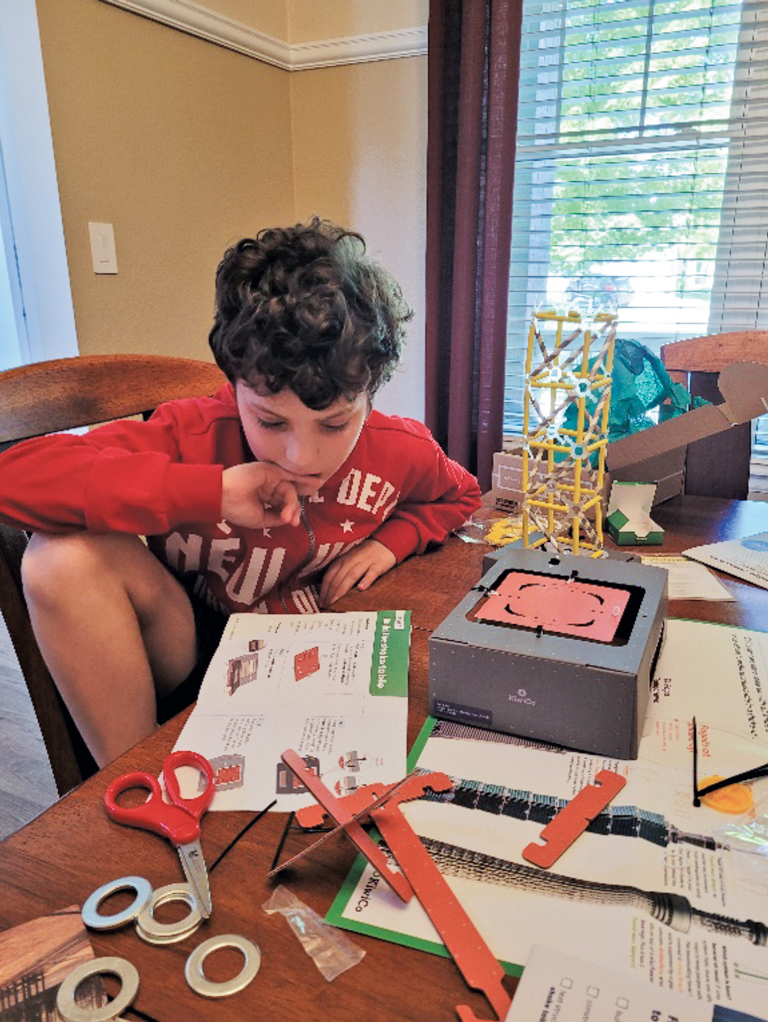
The Test
The testing was the best part of the entire experience and allowed for free and creative thinking. The kit includes short and long hangars, with metal washers intended to be used as “dampers.” The adults and kids had fun experimenting with what hangar and damper combination caused the least and most shaking. One feature that would have made it better is the ability to simulate different earthquake magnitudes. This was disappointing mainly for the adults but could be a potential product feature and marketing draw (KiwiCo, I expect a cut of that). It must be noted that, because of the plastic connectors, the tower is not likely to fail. So, you may need to make the point for your child to consider other impacts like occupant comfort and the general implications of a building whipping around, which is a difficult concept for a 9-year-old without being able to experience this visually. Following the original testing, the kids quickly became consumed with adding extra tower stories and creating crazy tower shapes that unrealistically defied gravity (future architects?).
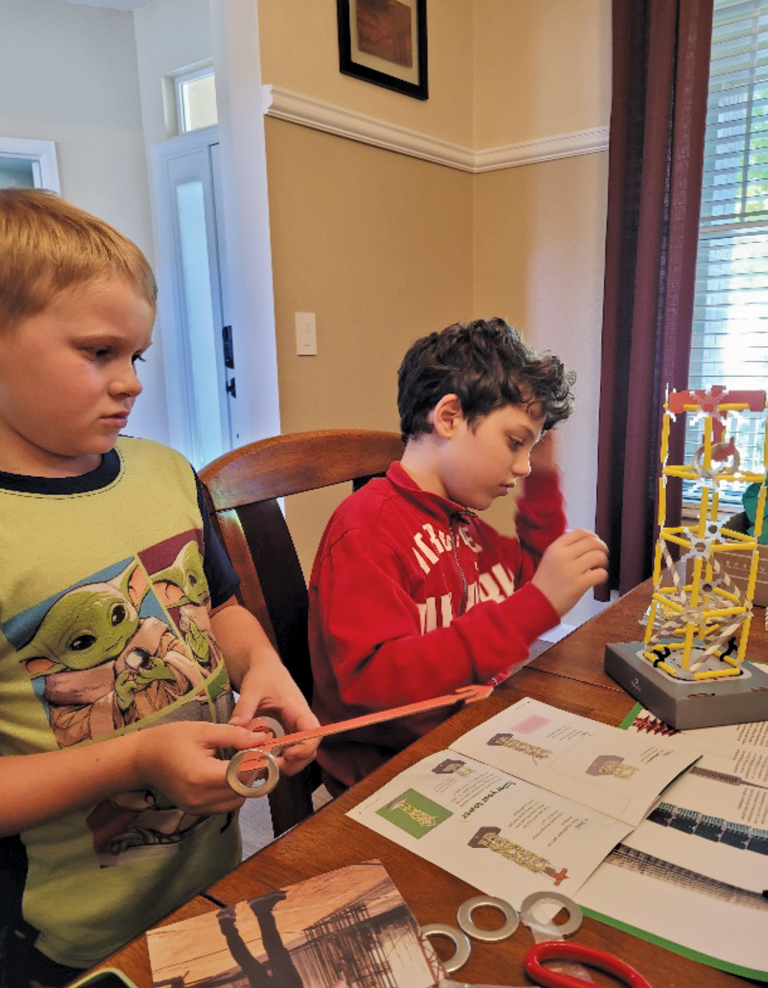
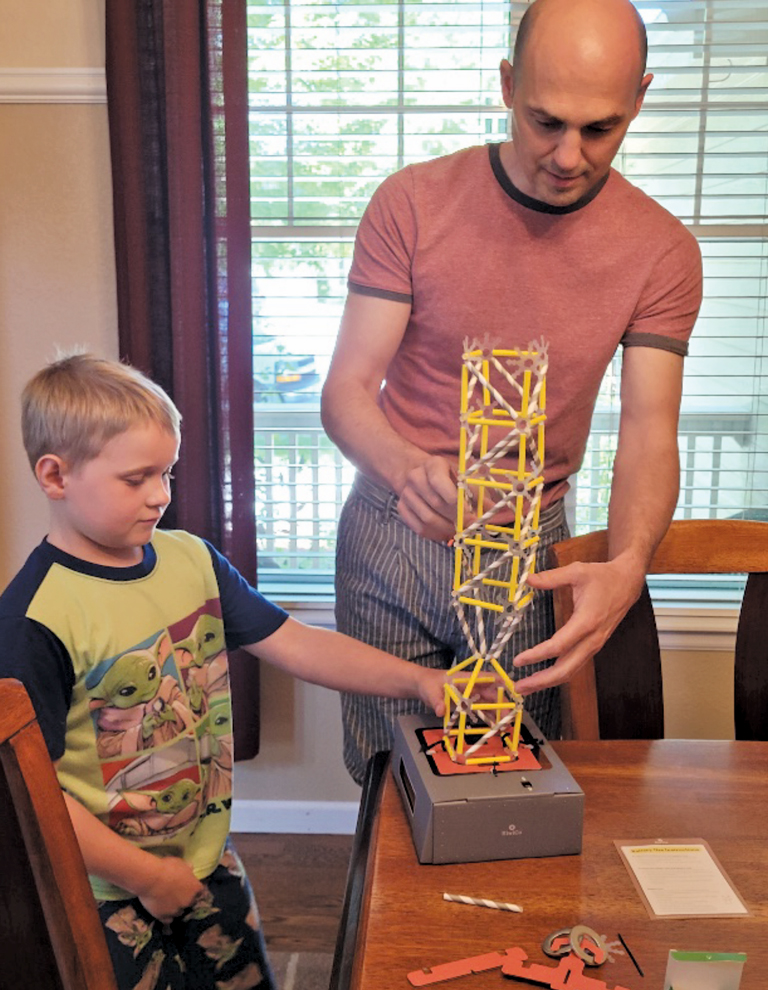
Should You Buy It?
In summary, here are the key takeaways from this experience:
- The tower and shake table are both incredible concepts.
- The bridge wasn’t much fun and seemed extraneous, and in the opinion of a building engineer, it suggests that KiwiCo should introduce civil engineering with separate bridge and building kits.
- The kit encourages thinking and demonstrates solid engineering principles.
- However, the instructions, much like Ikea furniture, were somewhat hard to follow but necessary and didn’t leave much opportunity for the “free thinker.” Many of the figures and graphics in the instructions were too small for the detail portrayed (which, in hindsight, is an excellent lesson to prepare kids for the real world of civil engineering!).
- Adults liked it too!
- Overall, the kit provides good value for the relatively low cost.
To leave you with one last piece of wisdom, please note that typical household straws could be cut to size and used to create higher towers! The longevity of the kit, at least for this household, is to be determined. However, since testing, the tower and shake table have been whisked away to the 8-year-old’s “secret lab” in the basement, which is a positive sign.■
